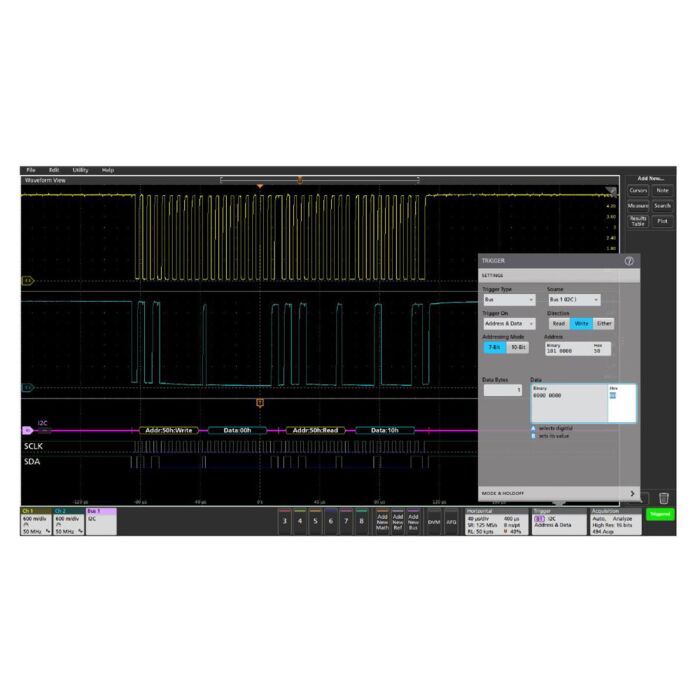Product Highlights
SPMI Power Management serial triggering and analysis
On a serial bus, a single signal often includes address, control, data, and clock information. This can make isolating events of interest difficult. Optional serial applications transform the oscilloscope into a robust tool for debugging serial buses with automatic decode and analysis for I2C, SPI, I3C, CAN, CAN FD, LIN, FlexRay, SENT, RS-232/422/485, UART, USB 2.0, Ethernet, SPMI, MIL-STD-1553, ARINC 429, I2S, LJ, RJ, and TDM.
Key features
- Trigger on all the critical elements of a serial bus such as address, data, etc.
- Decode all the critical elements of each message. No more counting 1s and 0s!
- Search through long acquisitions with user-defined criteria to find specific messages
- Event Table shows decoded serial bus activity in a tabular, time-stamped format for quick summary of system activity
Serial Triggering and Analysis Applications
The serial applications support automatic trigger and decode for I2C, SPI, CAN, CAN FD, LIN, FlexRay, SENT, RS-232/422/485, UART, USB 2.0, Ethernet, SPMI, MIL-STD-1553, ARINC 429, I2S, LJ, RJ, and TDM buses, making it easier to locate, analyze, and debug events of interest.
Serial triggering
Trigger on packet content such as start of packet, specific addresses, specific data content, unique identifiers, etc. on popular serial interfaces such as I2C, SPI, CAN, CAN FD, LIN, FlexRay, SENT, RS-232/422/485, UART, USB 2.0, Ethernet, SPMI, MIL-STD-1553, ARINC 429, I2S, LJ, RJ, and TDM.
Bus display
The bus display provides a higher-level, combined view of the individual signals (clock, data, chip enable, and so on) that make up your bus, making it easy to identify where packets begin and end and identifying sub-packet components such as address, data, errors, and so on.
Bus decoding
Tired of having to visually inspect the waveform to count clocks, determine if each bit is a 1 or a 0, combine bits into bytes, and determine the hex value?
Let the oscilloscope with a serial application do it for you! Once you've set up a bus, the oscilloscope decodes each packet on the bus, and displays the value in hex, binary, ASCII, or decimal (certain buses only) in the bus waveform.
Results table
In addition to seeing decoded packet data on the bus waveform itself, you can view all captured packets in a tabular view much like you would see in a software listing. Packets are time stamped and listed consecutively with columns for each component (Address, Data, and so on).
Serial triggering is very useful for isolating the event of interest, but once you've captured it and need to analyze the surrounding data, what do you do?
In the past, users had to manually scroll through the waveform counting and converting bits and looking for what caused the event. With a serial application, you can enable the oscilloscope to automatically search through the acquired data for user-defined criteria including serial packet content. Each occurrence is highlighted by a search mark. Rapid navigation between marks is as simple as pressing the ? and ? arrow buttons on the oscilloscope front panel or the Search badge. The 3 Series MDO uses the arrows in the Search badge to navigate.



